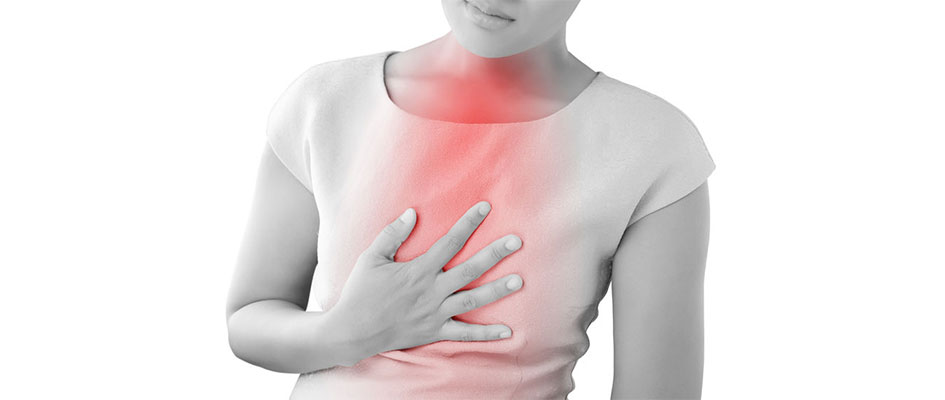Gastroesophageal reflux is a digestive disorder that causes the stomach's contents to back up into the esophagus. Millions of people suffer from this condition. Occasional heartburn is common, but persistent reflux that happens more than twice a week is considered to be gastroesophageal reflux disease and can eventually lead to more serious health problems. For those patients who find that medicine and lifestyle changes do not help to manage GERD symptoms, Dr Tabbara offers state-of-of-the-art, minimally invasive diagnostic and surgical solutions.
Symptoms
- Frequent heartburn
- Feeling a lump in the throat or the sensation that food is stuck behind the breastbone
- Trouble swallowing
Diagnosis
Some tests to diagnose GERD include:
Upper gastrointestinal endoscopy: A gastroenterologist inserts an endoscope gently through your mouth and throat to examine your esophagus and stomach. An endoscope is a thin, flexible tube with a camera on the end.
X-rays: Pictures are taken of your upper digestive tract after you swallow a chalky liquid to coat and fill the inside lining of your digestive tract. This allows Dr Tabbara to see the shape and condition of your esophagus, stomach and upper intestine (duodenum).
pH monitoring examination: A probe is placed in your esophagus during an endoscopy. The probe measures the level of acidity in your esophagus for the next 24 to 48 hours. You are asked to keep a diary of your symptoms and activity during the observation period.
Manometry: Thin tubes are inserted through the nose and into the esophagus to measure pressure of the stomach valve.
TreatmentSurgical Fundoplication
The most common operation for GERD is called laparoscopic Nissen fundoplication. During this procedure, Dr Tabbara makes several very small incisions and then inserts a laparoscope and instruments that he uses to repair the stomach valve. During the procedure, he wraps the top of the stomach around the lower esophagus. This helps strengthen the muscle that closes at the bottom of the esophagus and prevents food and acid from coming back up.
Hiatal Hernia
Many patients with GERD suffer from hiatal hernias. These hernias occur when part of the stomach pushes up through the hiatus (small opening in the diaphragm). While hiatal hernias may cause no symptoms, large hiatal hernias cause acid reflux, which can lead to erosion of the esophagus if left untreated.
Symptoms of large hiatal hernias include:- Heartburn
- Burping
- Difficulty swallowing
- Chest or abdominal pain
- Feeling especially full after meals
- Nausea or vomiting
Diagnosis
Upper gastrointestinal endoscopy: A thin, flexible tube equipped with a tiny camera is gently inserted into the throat and is used to examine your esophagus and stomach. It helps your doctor identify if there is scarring from reflux, and if benign or malignant cells are present.
Esophagram: This non-invasive, painless procedure requires you to drink Barium, a liquid that coats the lining of your esophagus and stomach. The x-rays taken as the Barium passes through your body give your doctor a picture of the shape, condition and function of your esophagus, stomach and upper intestine (duodenum).
Treatment
Hiatal hernias can be repaired with either open or laparoscopic surgery.
Dr Tabbara performs laparoscopic surgery to reinforce the malfunctioning valve between the esophagus and stomach, pull the stomach back down into place in your abdomen, and/or reduce the size of the hiatal opening.
If "open" surgery is required, Dr Tabbara, repairs the hernia through an incision in your chest wall or abdomen while you are under general anesthesia.


